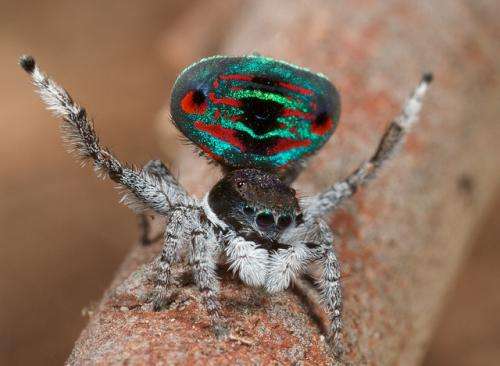Local fauna species unique to specific locations

Animals in the south-west which have a limited ability to travel show a high degree of local endemism, according to a review of genetic data for fauna in the region.
WA Museum arachnologist and lead author Michael Rix says they explored and summarised existing animal evolutionary knowledge in the region as the past focus had mainly been on plants.
"Animals have never really featured heavily in that discussion," Dr Rix says.
"We were very keen to highlight those groups of animals that might benefit most from future research."
He says four testable hypotheses emerged from the review.
These take the form of phylogenetic trees, whereby the branches signify physical space but the nodes on those branches have dates.
The first describes the persistence of ancient relictual (surviving remnant) species in wetter habitats.
The second is a theory of species divergence on either side of the Nullarbor.
East-west divergence is thought to have occurred between many taxa by the mid-Miocene period (23-5 million years ago).
However, he says it does not apply so readily to animals with a greater ability to travel, such as large mammals, birds and winged insects.
The third is the emergence of new animal species as more arid areas arose in the mid-to-late Miocene.
Many of the more sedentary animals in the semi-arid Wheatbelt and south east coastal province appear to have evolved from older lineages still living in the damp jarrah and karri forests.
Less "dispersive" species common in high rainfall zone
The fourth hypothesis is the pattern of short-range endemism, among these less "dispersive" taxa, in the high rainfall zone spanning from Margaret River to a point east of Albany.
For example, three recently described assassin spiders inhabit different parts of the Stirling Range.
Zephyrarchaea robinsi occurs on the Eastern Massif from Bluff Knoll to Ellen Peak; Zephyrarchaea melindae inhabits Toolbrunup Peak and Mount Hassell; and Zephyrarchaea barrettae is only found on Talyuberlup Peak.
They are separated by low lying terrain, very different to the cool moist environment they need to thrive, so each species appears to have evolved in isolation.
Dr Rix stresses that they had to work with limited data, as most taxa are yet to be studied or described.
Available evidence shows many larger animals continued to disperse until the Quaternary era (1.8 million years ago), whereas many smaller, less mobile animals radiated much earlier, in the Miocene.
Speciation in plants seems to have occurred either persistently or with punctuated radiation, well into the Plio-Pleistocene and in some groups, Quaternary periods.
More information: Michael G. Rix, Danielle L. Edwards, Margaret Byrne, Mark S. Harvey, Leo Joseph and J. Dale Roberts: (2014) "Biogeography and speciation of terrestrial fauna in the south-western Australian biodiversity hotspot." Biological Reviews DOI: 10.1111/brv.12132
Journal information: Biological Reviews
Provided by Science Network WA




















